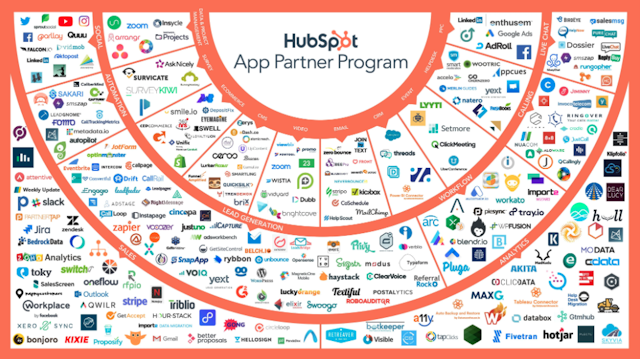Why scaling companies need to rethink their tech stacks
Re-evaluation is the watchword as enterprises digest the learnings of a tumultuous 2020. With a renewed focus on the digital customer experience, many are finding their tech stacks too complex. What’s the role of CRM in this new business context? How do they tackle this and get C-suite buy-in for the investment required? Do they have the right talent in-house and how can agency partners best help them? These were the key issues of a recent Q and A session between The Drum and Scott Brinker, VP, platform ecosystem at HubSpot.

Do companies believe they have the right tech stack?
Do most companies believe they have the right tech stack – or do they know they need to change, but have not done so?
Almost everyone feels their tech stack is evolving because so much new technology keeps coming to market and so many changes are still happening regarding buyer expectations, competitive dynamics and new channels. Do you have a stack that has all these unconnected, disparate products living in silos? You're probably experiencing pain. Or, have you picked a primary CRM platform of record, where all things around your stack are designed to integrate with it? These are key questions business leaders should be asking themselves.
What specifically can HubSpot offer that other options cannot?
We really focus on what a modern CRM platform should be and are fundamentally built with customer experience in mind. We support company growth by helping front office teams deepen relationships with customers and provide a best-in-class experience. We make this possible through a powerful and easy to use CRM, complemented with hundreds of apps and tools that can be integrated out of the box.
HubSpot has made a conscious decision to invest in our own product team so our customers benefit from software that’s cohesive, customisable and empowering. Where other CRM platforms were assembled through multiple, disparate acquisitions, each with a completely different underlying tech stack, HubSpot is carefully crafted in-house using a collection of proven tools, components, and systems that seamlessly work together as the building blocks of the user experience.

What made 2020 a test run for re-evaluation in 2021?
2020 was all about digital engagement. Our customers were required to engage more with consumers through digital channels. We’ve learned a lot about customers’ expectations of these channels; what works well, what doesn't. Secondly, 2020 was the year of remote work, teaching us about distributed working processes and their supporting technologies. So the year really set businesses up to re-evaluate whether their tech stacks will allow them to efficiently collaborate.
How can businesses avoid the complexity of digital experience and converging technologies?
Using a lot of apps is not inherently a painful experience. In fact, reducing complexity is the very purpose of trying to get all these things connected in a single platform. The iPhone and Android are very stable platforms and the apps living within them adhere to the user experience nicely. It is a straightforward customer experience. B2B stacks, although not as simple, are conceptually similar. You want a common foundation platform with the ability to augment it with specialised capabilities unique to your business or strategy.
When looking at scaling companies’ tech stacks, what is the most common failure?
Poor integration is the most prominent issue. A few years ago, little was integrated, and people really felt the pain with their stacks when they didn’t get tight integrations between the tools they love. Today, however, more of these technologies are out-of-the-box, with native integration – so I’m optimistic we’re moving in the right direction.
What tools and which processes will come to the fore in 2021?
Events and virtual meetings experienced tremendous growth in 2020 because we were forced into it. What do great events now look like? How do companies intersect with things like online communities as physical events begin to return? There is much opportunity for creativity, and I expect a lot of great innovation to happen in this direction.
There is also huge potential in tools that help companies be more effective internally. Team collaboration and internal communications software will increasingly play a fundamental role in businesses' tech stack. Expect to see innovation regarding project management and learning management systems, especially while we remain dispersed geographically.
Is there a common point on the journey of a scaling company where the pain points become obvious and detrimental to growth?
Marketing organisations are frequently in a struggle between centralisation and decentralisation. When you are getting started, you have this extraordinary moment in time when both concepts live together. As companies grow, they start to de-centralise, causing disconnection. Often, they then return to the centralised approach and overshoot, since too much-centralised control slows down speed. The key is finding out what should be centralised and decentralised and how to put appropriate systems and process in place.
Do you think scaling companies have the right in-house talent to deal with an evolving tech-stack?
I'm a big believer in companies strategically owning their own tech stack since itis entwined with the customer experience you deliver. You can’t outsource that. Companies should view their tech stack as an asset. However, as most companies are in different maturity stages, it is valuable as companies grow more digitally sophisticated for them to hire external service providers and consultants to help with that transition.
How does the CTO make the business case for investment in tech to a C-suite that might not understand the requirement?
We need to look at this through the lens of outcomes and business results. For example, over the past year, we've seen massive growth in digital engagement. Similarly, we’ve seen migration from people who used to connect through several channels and now they're primarily using a digital-first channel. If the world is becoming more digital and shaping your business, you need to invest in making this process word-class so you can quantify that rate and scale.
Outcome metrics are also paramount. The impact of the scale and what customer are doing and saying- becomes a triangulation and key indicator for investing in refining processes and making things better
What examples do you have of scaling companies that have got it right?
Those getting it right are companies that understand that to grow better, they need to run better first. In order to scale in today’s world, businesses need to transform their operations internally to create remarkable experiences externally.
In a moment when consumers are more demanding than ever before, customers won’t wait for your systems to catch up or for your team to discover the points of friction that are causing frustration. They don’t care about your complexity or that you don’t have the systems in place to understand who they are and what they want.
In 2021, companies -from startup to scale up and beyond- that have adopted a CRM platform as a single source of truth to align all front office teams will continue to be in a better position to deliver a delightful end-to-end customer experience as they scale.
Do you foresee new issues arising in 2021 that have not been flagged up over the last 12 months?
There are three things we can look at:
- The quality of data. Capabilities like machine learning and artificial intelligence are improving at an incredible rate, but their effectiveness relies on data quality. There will be more emphasis on data freshness and quality, as well as improvements in business intelligence.
- The way channels continue to change. Customers’ expectations of messaging platforms, chat-bots, and voice assistants like Siri and Alexa will continue to grow.
- The no-code movement, of which I am a big fan. It is a philosophical change: empowering business users to be able to do ever more things without having to file a ticket and wait for somebody else. The evolution of HubSpot’s automation engine is a fantastic example. Our interface is so simple and so easy to use that you can go ahead and do it yourself. I expect to see more evolution in this direction.
Scott Brinker is VP, platform ecosystem, HubSpot
Content created with:

HubSpot
HubSpot is a leading CRM platform that provides software and support to help businesses grow better. The platform includes marketing, sales, service, and website...
Find out more